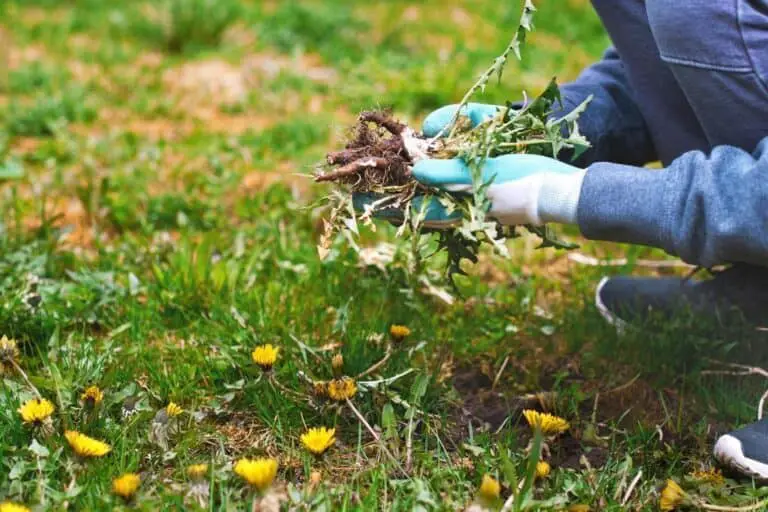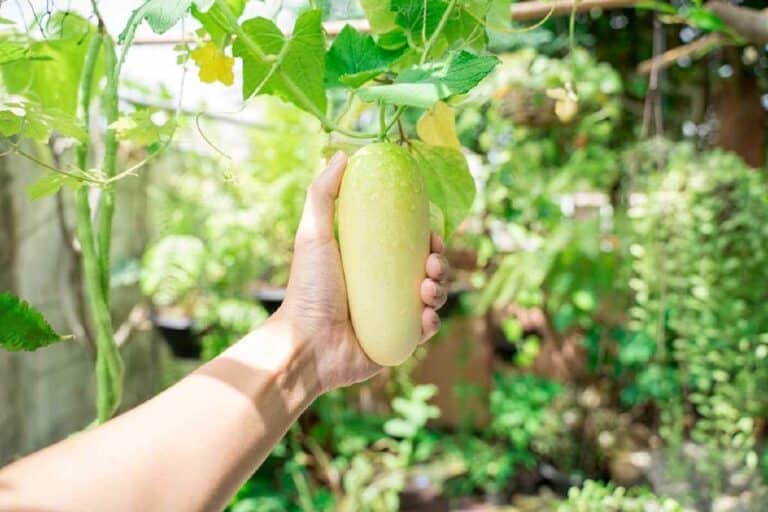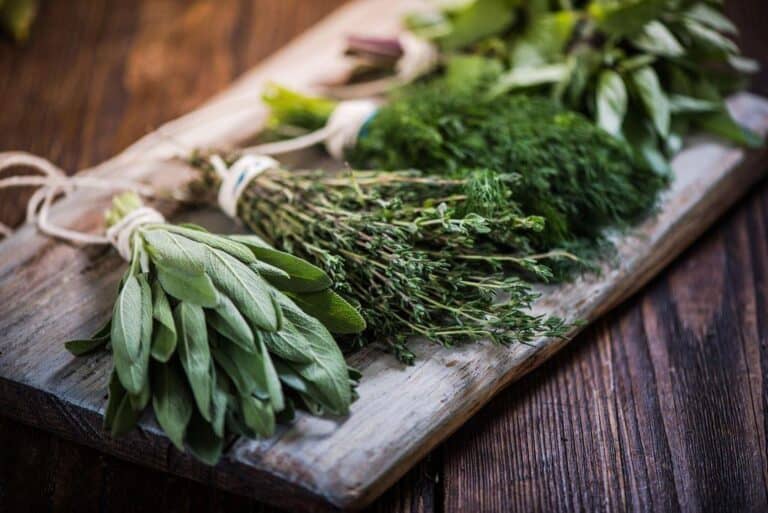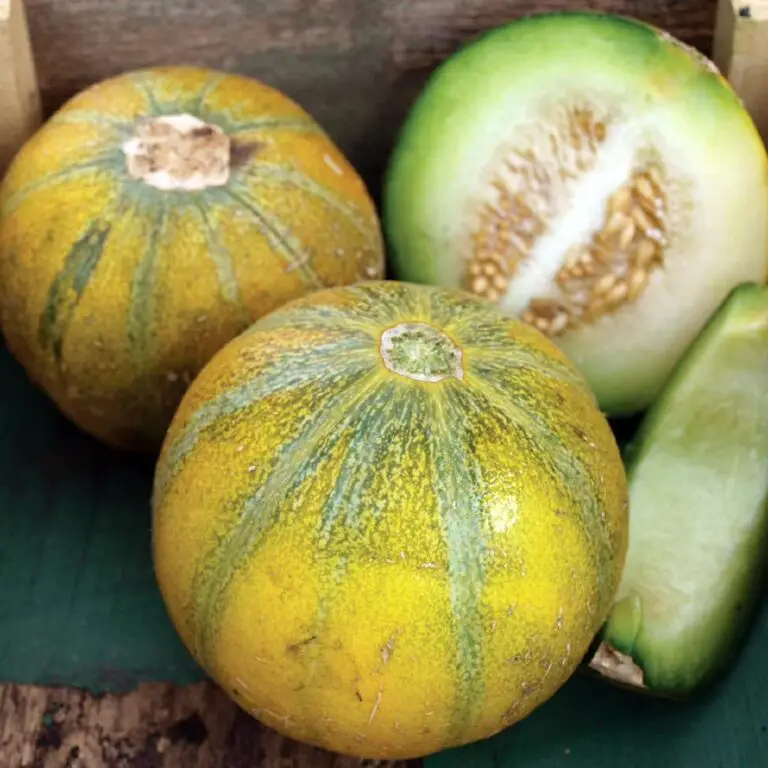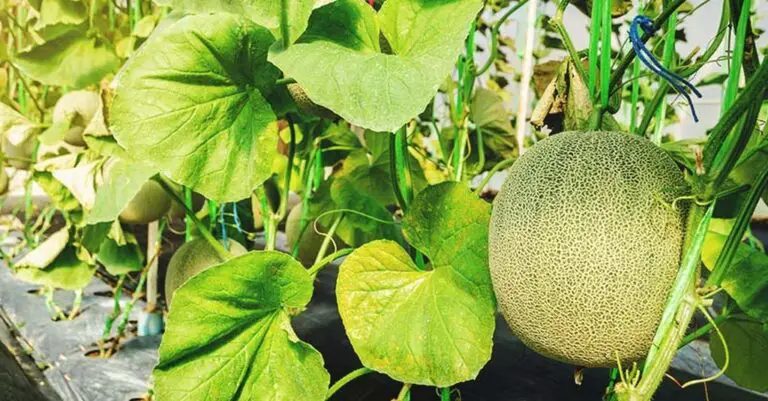Cantaloupe Leaves Turning Brown or Spots: Here’s Why and How to Fix Them
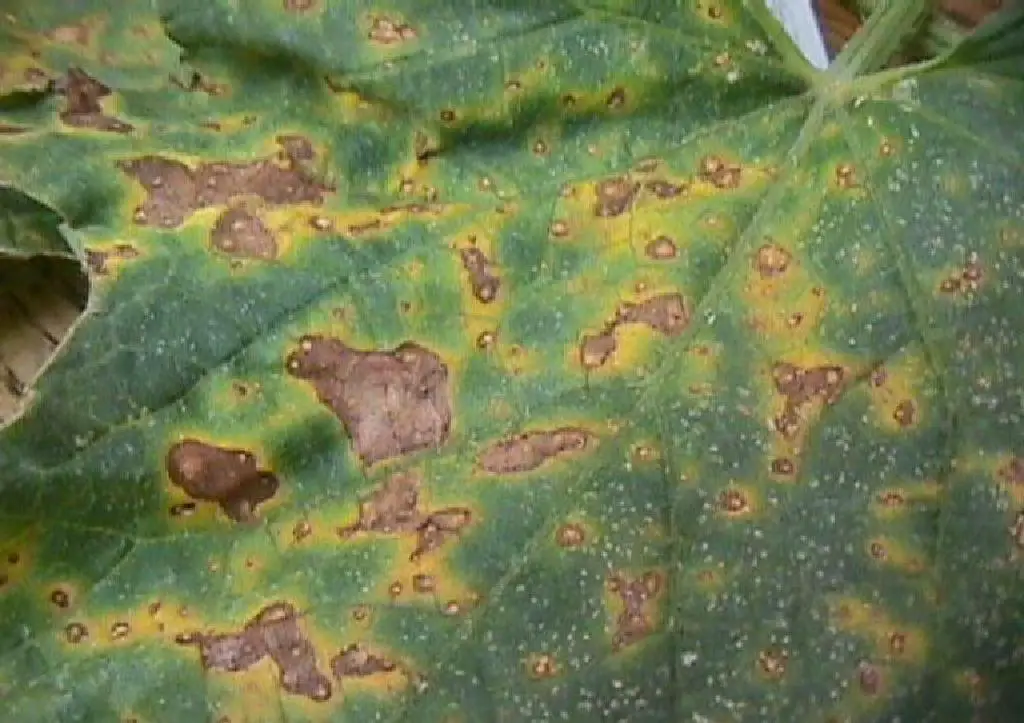
Are you noticing that the leaves of your cantaloupe plants are turning brown or developing spots? Don’t worry, you’re not alone! Brown leaves and spots on cantaloupe plants are a common problem that many gardeners face.
The good news is that there are ways to fix the problem and get your cantaloupe back to healthy growth. In this article, we’ll explore some of the reasons why cantaloupe leaves turn brown or develop spots, and provide tips on how to fix the issue.
Whether you’re a seasoned gardener or just starting out, you’ll find some useful advice here to help you keep your cantaloupes healthy and thriving. So, let’s dive in and learn more about this common gardening issue.
Understanding of Cantaloupe Leaves
Cantaloupe is a sweet and healthy fruit that is commonly consumed during the hot summer months. It is a form of muskmelon that is cultivated in warm areas and belongs to the Cucurbitaceae family.
The plant may grow to be several feet long, with huge, green leaves that aid in the growth and development of the fruit. As a result, understanding the basic anatomy and functions of cantaloupe leaves is essential.
The leaves of cantaloupe are an important element of the plant’s photosynthetic system, which turns light energy into chemical energy that the plant may use for growth and development. They are usually big, green, lobed, and have a rough, slightly hairy appearance.
The green color is caused by chlorophyll, which is produced by the leaves. Chlorophyll also helps in photosynthesis. The leaves not only help the plant create food, but they also protect it from problems like too much heat and UV rays.
If you want the cantaloupe plant to flourish and produce healthy fruit, it is vital to have a working knowledge of how the leaves are formed and what function they serve. Healthy leaves are brilliant green with a waxy texture and a sturdy structure. They should be able to handle hot weather and long periods in the sun without getting stressed or turning yellow.
A healthy cantaloupe plant would often have large, vibrant green leaves. These leaves are essential for producing a large amount of luscious, juicy fruit. As the leaves start to turn brown, yellow, or have brown spots, it typically indicates that there is an underlying problem that needs to be addressed.
Why Cantaloupe Leaves Turning Brown or Having Brown Spots
Cantaloupe leaves turning brown can be alarming, especially for new gardeners, as it is often a sign that something is wrong with the plant. Brown leaves can be caused by a variety of factors, including environmental stress, diseases, and pests. It’s important to give the cantaloupe plants enough water, especially when it’s hot outside.
Fungal Infection Causing Browning Spots Cantaloupe Leaves
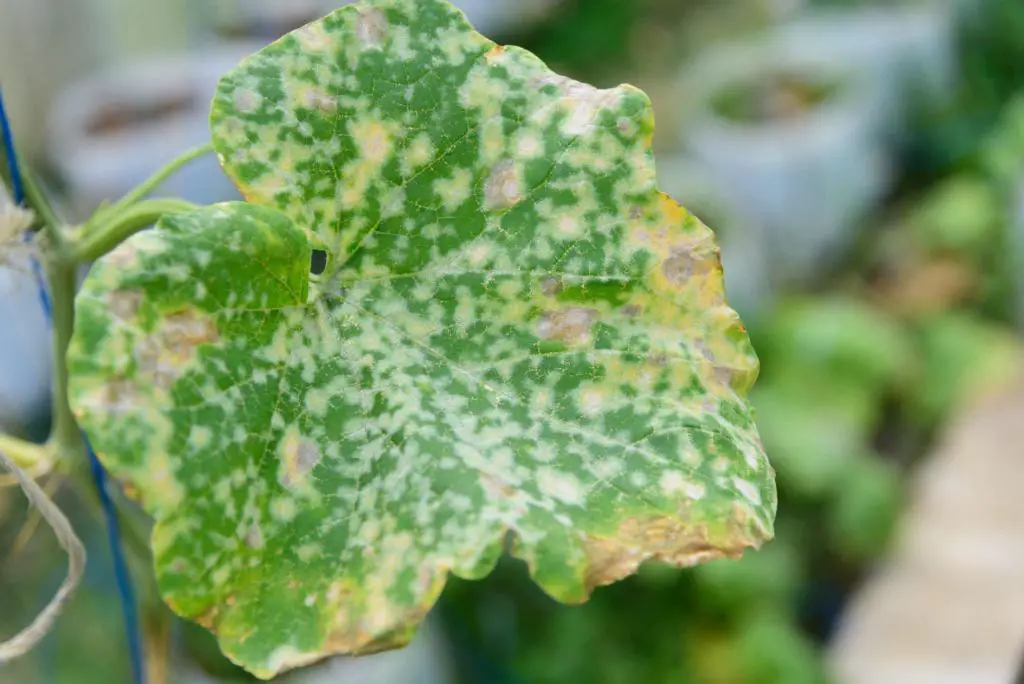
Cantaloupe plants are a tasty addition to any garden, but sometimes the leaves can turn an unsightly brown. One of the most common reasons for this is due to a fungal infection. The two most common fungi that affect cantaloupes are Alternaria leaf blight and cercospora leaf spot.
1. Alternaria leaf blight
If you’ve noticed brown spots on your cantaloupe leaves, it’s possible that your plants have been affected by a fungus disease known as Alternaria leaf blight. This fungus attacks the leaves, stems, and fruit of the plant, and can spread quickly in warm and humid conditions.
One of the first signs of Alternaria leaf blight is the appearance of small, yellow-brown spots on the leaves. As the disease progresses, these spots get larger and turn darker brown or black. Eventually, the leaf tissue will start to die, and the leaves will drop off the plant.
To prevent the spread of Alternaria leaf blight, you need to remove any infected leaves as soon as possible. Be sure to clean up any fallen leaves or fruit from the ground as well.
It’s also a good idea to water your plants in the morning and avoid getting the leaves wet, as wet leaves can encourage the growth of fungal spores.
Alternaria leaf blight can also be stopped by using a fungicide, but be sure to follow the directions carefully and only use products that say they are safe for cantaloupe.
2. Cercospora leaf spot
One of the most common reasons for this is a fungal infection, and cercospora leaf spot is one of the worst. This type of fungus lives on debris, and can quickly spread through your garden via wind and rain.
Cercospora leaf spot typically starts with small brown spots on the leaves that quickly grow larger and spread. If you don’t treat the spots, they can do a lot of damage to the leaves and eventually kill them. Keep a close eye on your cantaloupe plants and take action at the first sign of cercospora leaf spot.
The best way to prevent this type of fungal infection is to keep your garden clean and free of debris. This includes removing any dead leaves or other plant matter from your cantaloupe patch.
TIPS ![]()
If you do notice brown spots on your cantaloupe leaves, it’s important to remove them right away to prevent the spread of the fungus. You may also want to consider using a fungicide to help control the spread of cercospora leaf spot.
Overwatering Causing Browning Cantaloupe Leaves
When it comes to cantaloupe plants, too much water can quickly become a problem. When you overwater, the roots stay wet all the time and can’t get the right amount of oxygen they need.
This creates a perfect breeding ground for fungi and bacteria that can wreak havoc on your plants. The first symptom you may notice is that the leaves are starting to turn yellow and then brown.
To prevent the problem of overwatering, you can start by checking the drainage in the area where your cantaloupes are growing. Good drainage is key to preventing your plants from getting too much water. If you don’t have good drainage in the area, consider using raised beds or containers to grow your cantaloupes.
The next step is to reduce the frequency of watering. Cantaloupes require around one inch of water every week. During times of heavy rainfall, you may not need to water them at all. It’s best to let the rainwater do its job.
Lastly, when you water your cantaloupes, make sure to water at the base of the plant and not overhead. If you water from above, the leaves will always be wet, which is perfect for fungi to grow. By following these steps, you can prevent the problem of too much water and keep your cantaloupe plants healthy and thriving.
Pests Causing Browning Cantaloupe Leaves
Aphids
Pests can be a big problem for cantaloupe plants, and one of the most common culprits is the aphid. These small insects are usually found in colonies on the undersides of leaves and are notorious for their ability to suck the sap out of the leaves. This causes the leaves to turn yellow and then brown.
In addition to their direct damage, aphids can also spread diseases from plant to plant, making it important to take action as soon as you notice them.
There are a few different ways to get rid of aphids on cantaloupe plants. One method is to simply blast them off the plant with a strong stream of water from a hose. This can be effective for smaller infestations, but for larger ones, you may need to use an insecticide. There are many organic and chemical options available, so it’s important to research and choose the best one for your specific situation.
Another way to keep aphids from taking over your cantaloupe plants is to attract bugs that eat them, like ladybugs and lacewings. You can also get these helpful bugs to come to your garden by planting flowers like marigolds or yarrow. Aphid infestations can also be prevented by keeping your garden clean and getting rid of any plants that are dead or sick.
Cucumber Beetles
Cucumber beetles are a common pest that can wreak havoc on your cantaloupe plants. These small, striped bugs are about a quarter of an inch long and come in yellow, green, or black. They often attack cantaloupe plants early in the season, when the plants are still young and vulnerable.
The beetles chew on the leaves, flowers, and fruit of the plant. They cause damage that can stunt the growth of the plant or even kill it entirely. The cantaloupe’s leaves will turn brown and fall off, and the flowers will die before they should. In some cases, the fruit might not even grow, or it might grow in a way that makes it look bad and taste bad.
Cucumber beetles can hurt your cantaloupe plants, so you need to do a few things to keep them away. One of the most effective ways to keep cucumber beetles at bay is to practice good garden hygiene. This means removing all plant debris from the garden and keeping the area clean and free of weeds.
Another way to prevent cucumber beetles is to cover your cantaloupe plants with row covers or netting. This will prevent the beetles from laying their eggs on the leaves, which is where their larvae hatch and cause the most damage.
Finally, you can use insecticides to kill cucumber beetles. There are many insecticides on the market that are specifically designed to target cucumber beetles, but be sure to read the label carefully and follow the instructions. Some insecticides can be harmful to beneficial insects, such as bees and ladybugs, so it’s important to use them carefully and selectively.
Squash Bugs
Squash bugs are another common pest that can cause browning in cantaloupe leaves. These bugs love to feed on the leaves and flowers of cantaloupes, and they can quickly damage the plant. Squash bugs are typically brown or gray in color and have a shield-shaped body. They can be difficult to spot as they tend to blend in with the soil and debris around the plant.
One way to prevent squash bugs is to keep your garden clean and tidy. Squash bugs love to live in debris and fallen leaves, so keeping the area around your plants clear will make it less attractive to them. You can also use row covers to protect your plants from these pests, especially during the early stages of cantaloupe growth when they are most vulnerable.
If you already have squash bugs on your cantaloupe plants, you can try picking them off by hand and dropping them into a bucket of soapy water. You can also get rid of them with insecticidal soap or neem oil, but it’s important to follow the directions carefully so you don’t hurt your plants or good bugs. Also, changing the crops you grow every year can help keep squash bugs from building up in the soil.
Leaf Burn Causing Browning Cantaloupe Leaves
Leaf burn can be a common issue for cantaloupe plants, especially in hot and sunny climates. When the leaves are exposed to too much sun, they can turn crispy and brown on the edges. Unlike browning caused by fungal infections or overwatering, the browning caused by leaf burn is usually more severe and can stunt the growth of the plant.
If you live in a hot and sunny climate, you should keep an eye on your cantaloupe plants for signs of leaf burn. Once you notice browning, it’s important to take action to prevent further damage. One way to prevent leaf burn is to provide some shade for your plants. You can plant them in an area that gets partial sunlight area, or you can use a tarp or other type of shading material to reduce the amount of sun exposure.
If the leaves have already turned brown, you can try trimming them off. This will let the plant put its energy into making new growth and might stop the damage from spreading. Alternatively, you can try moving the plant to a shadier spot to provide some relief from the hot sun.
It’s also important to note that while too much sun exposure is a common cause of leaf burn, it can also be caused by other factors such as chemical exposure, nutrient deficiencies, or extreme temperatures. By keeping an eye on your plants and taking action when you see signs of browning, you can stop further damage and help them grow in a healthy way.
Should You Cut or Trim Cantaloupe Leaves with Brown Spots?
Cantaloupe plants have large leaves that can be hurt by things like fungus, bugs, and too much water. When you see brown spots on cantaloupe leaves, you need to figure out why they are there before you do anything. In some cases, it may be necessary to cut or trim the leaves to help the plant recover, but in other cases, the best approach is to leave them as they are.
If the brown spots are caused by fungal infections, it is advisable to cut off the affected leaves to prevent the fungus from spreading to other parts of the plant. However, you should be careful not to damage the healthy leaves, as they play a crucial role in photosynthesis, and the plant needs them to produce food. Also, make sure to get rid of the infected leaves, since the fungus can live on them and cause problems in the future.
On the other hand, if the brown spots are due to pests or too much water, cutting or trimming the leaves may not be the best solution. Instead, it would be better to get to the root of the problem by using natural pest control or changing how often you water. In some cases, all you need to do to help a plant recover is take off any dead or damaged leaves. This won’t stop the plant from growing or making fruit.

